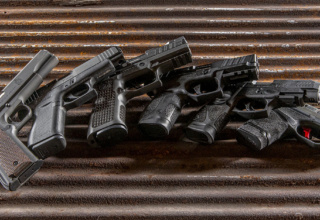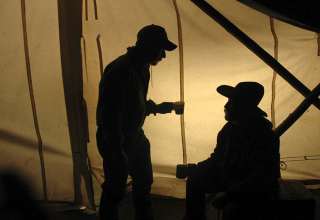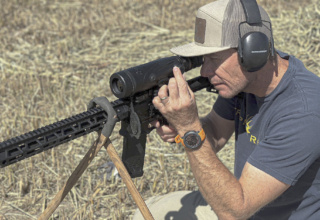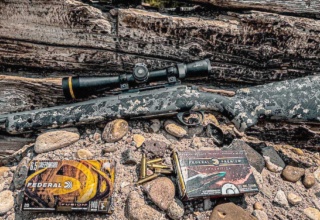“Red flag” laws are terrifying and are currently in effect in 19 states. Worse yet, more states are toying with the idea of adding red flag gun laws. Here’s how to stay ahead of the ever-changing red flag gun law game and ensure you have the right representation if you ever become a victim.
by Jace Bauserman
My pops always used to say, “Well, that’s a red flag.” I always noticed these were his words when something seemed out of place, wrong, or disturbing.
Though they didn’t exist then, red flag laws, put in layperson’s terms, are alleged gun violence prevention laws that allow a state court to order firearm removal from a person they may believe is a present danger to others or themselves.
That’s scary because it is open to interpretation and has a lot of gray.
A few years back, a good friend of mine, a collector of guns, went on a sidearm spree. He has money and he has taste. He ordered a pile of handguns from our local dealer. During that time, an individual reported him to the local authorities as a person of interest planning to commit a crime, which, if you knew him, is laughable. He was doing nothing wrong. He was exercising his Second Amendment right, and someone else didn’t like it. Nothing came of it, but the police did visit his home and questioned him.
Think it’s not an issue?
Wrong.

Though ruled unconstitutional by a pair of state Supreme Court justices, New York’s red flag laws applications have skyrocketed and are up over 1,000 percent. According to New York State Police, the number of extreme risk protection orders has jumped from 95 in 2021 to 584 in 2022, and from January to March of 2023 is already up to 283, setting a pace for over 1,000 this year.
In most red flag cases, there is no diagnosis from a medical professional deeming a person a harm to themselves or others, and in most cases, it comes down to he said/she said. It seems childish and it is, but the gray area combined with the fact that different states have different definitions of red flag laws, it is a very open-ended problem.
Take California, for instance. San Francisco’s District Attorney has a page about the state’s red flag law on its website. Take a look at the wording and tell me it is not bothersome.
According to the webpage, family members, current household members, employers, coworkers, and teachers can get a gun violence restraining order. Of course, there are parameters to the filing. For instance, a coworker can file a petition if they had “substantial and regular interactions with the other person for at least one year, and they have obtained the approval of the employer to file the petition.”
In San Francisco, once a form is filed, it is left to the discretion of the judge to grant or deny a hearing. While I can’t say this is the case in California, according to my research, the accused individual (in many states) is not typically present for the hearing. If the person is not there to speak on their behalf and the motion passes, firearms are confiscated and the accused cannot possess or purchase firearms until their name is cleared.

Even if a crime is not committed, in some cases, confiscated firearms remain in the custody of the authorities.
Colorado’s General Assembly, during the 2019 Regular Session, created Extreme Risk Protection Orders that states: The act creates the ability for a family or household member or a law enforcement officer to petition the court for a temporary extreme risk protection order (ERPO) beginning on January 1, 2020. The petitioner must establish by a preponderance of the evidence that a person poses a significant risk to self or others by having a firearm in his or her custody or control or by possessing, purchasing, or receiving a firearm. The petitioner must submit an affidavit signed under oath and penalty of perjury that sets forth facts to support the issuance of a temporary ERPO and a reasonable basis for believing they exist. The court must hold a temporary ERPO hearing in person or by telephone on the day the petition is filed or on the court day immediately following the day the petition is filed.
The more you look into red flag laws, the scarier they seem, and currently, 19 states have some form of red flag law in place. These states with red flag laws in effect, whether those be Extreme Risk Protection Orders, Extreme Risk Firearm Protection Orders, Risk Protection Orders, Gun Violence Restraining Orders, Risk Warrants, or Proceedings for the Seizure and Retention of a Firearm include:
- California
- Colorado
- Connecticut
- Delaware
- District of Columbia
- Florida
- Hawaii
- Illinois
- Indiana
- Maryland
- Massachusetts
- Nevada
- New Mexico
- New York
- Oregon
- Rhode Island
- Vermont
- Virginia
- Washington
Laws have been proposed but have not been finalized in:
- Arizona
- Kansas
- Kentucky
- Michigan
- Minnesota
- Montana
- Nebraska
- New Hampshire
- North Carolina
- North Dakota
- Ohio
- Pennsylvania
- Tennessee
But don’t fret. Firearms Legal Protection is here to help if you are the victim of an Extreme Risk Protection Order. As a member of FLP, if you become a respondent to a validly issued red flag law order that results in confiscating your firearms, FLP will provide you with an attorney.

That’s enough peace of mind for me. As a Colorado gun owner, I have to consider the possibility that I could be the victim of a red flag law, and if I am, it’s reassuring to know that FLP will handle the process.
Remember, it is never going to happen to you until it does, and if the case gets drawn into a severe legal ordeal, the max out-of-pocket fee for FLP members is $5,000.
What about those that don’t live in an active or soon-to-be red flag law state? Do you still need FLP? Absolutely! FLP members receive up to 100-percent payment of attorney fees for those caught up in a self-defense shooting case. With three membership options, visit FLP’s website and find the one that’s right for you.















